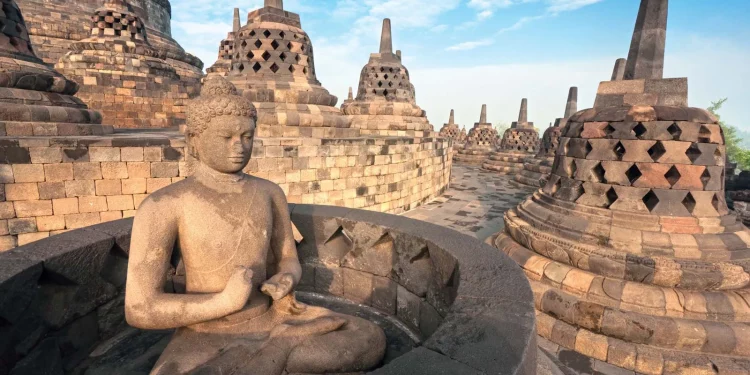Indonesia, the world’s largest archipelagic country, has a rich and diverse history that spans thousands of years. From the rise of early kingdoms and the spread of Islam, to European colonization and the hard-fought road to independence, Indonesia’s journey has shaped it into one of the most vibrant democracies in the world today.
Ancient Civilizations and Kingdoms
Long before it became a unified nation, the Indonesian archipelago was home to ancient cultures that thrived through agriculture, trade, and maritime exploration. Early settlers, such as the Austronesian people, laid the foundations of Indonesian civilization.
By the 7th century, powerful kingdoms emerged:
-
Srivijaya Empire in Sumatra dominated maritime trade routes and spread Buddhism across Southeast Asia.
-
Majapahit Empire, based in Java, reached its peak in the 14th century, uniting much of modern-day Indonesia under Hindu-Buddhist influence.
These kingdoms were known for their sophisticated governance, architecture, literature, and strong naval power.
The Arrival of Islam
Starting in the 13th century, Islam spread across Indonesia through trade networks and the efforts of Muslim scholars and missionaries. Islamic sultanates, such as Demak, Ternate, and Mataram, began replacing older Hindu-Buddhist kingdoms.
By the 17th century, Islam had become the dominant religion in the archipelago, though Hinduism, Buddhism, and traditional beliefs continued to thrive in certain regions, particularly Bali.
European Colonization
The lucrative spice trade attracted European powers to the region. The Portuguese arrived in 1511, followed by the Dutch, who established the Dutch East India Company (VOC) in the early 1600s. Over time, the VOC and later the Dutch colonial government gained control over vast parts of the Indonesian archipelago.
For over three centuries, Indonesia was exploited for its natural resources under Dutch rule. Despite resistance and revolts, colonial control remained strong until World War II.
The Fight for Independence
During World War II, Japan occupied Indonesia from 1942 to 1945, weakening Dutch influence. After Japan’s defeat, Indonesian leaders Sukarno and Mohammad Hatta declared independence on August 17, 1945.
However, the Dutch attempted to regain control, leading to a violent struggle. After years of diplomacy and armed resistance, the Netherlands officially recognized Indonesia’s independence in 1949.
Post-Independence Developments
Following independence, Indonesia faced internal challenges:
-
Under President Sukarno, Indonesia adopted “Guided Democracy” in the 1950s and early 1960s.
-
In 1965, a failed coup led to mass anti-communist purges and political unrest.
-
In 1967, Suharto rose to power and established the New Order regime, prioritizing economic growth but limiting civil freedoms.
Suharto remained in power for over three decades until his resignation in 1998, following the Asian financial crisis and mass protests. This marked the beginning of the Reformasi era, with a renewed focus on democracy, human rights, and decentralization.
Indonesia in the Modern Era
Today, Indonesia is a democratic republic with a vibrant political system and active civil society. It is the largest Muslim-majority country in the world and plays a key role in regional organizations such as ASEAN.
Despite challenges such as corruption, natural disasters, and inequality, Indonesia continues to grow economically and maintain political stability.
From ancient kingdoms and colonial oppression to independence and democratic reform, the history of Indonesia is a testament to resilience, unity in diversity, and national pride. As the country moves forward, it carries with it a rich legacy of struggle, culture, and hope for a brighter future.






